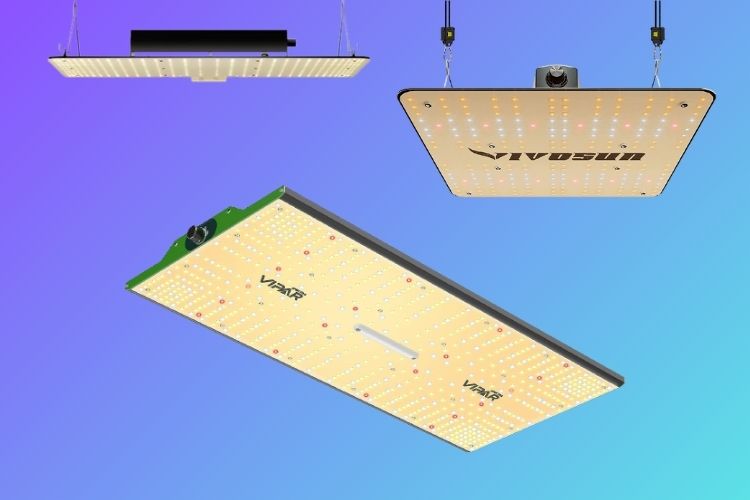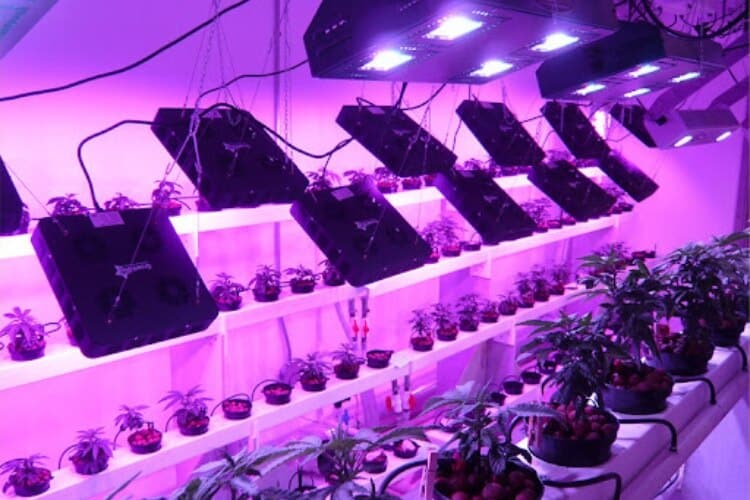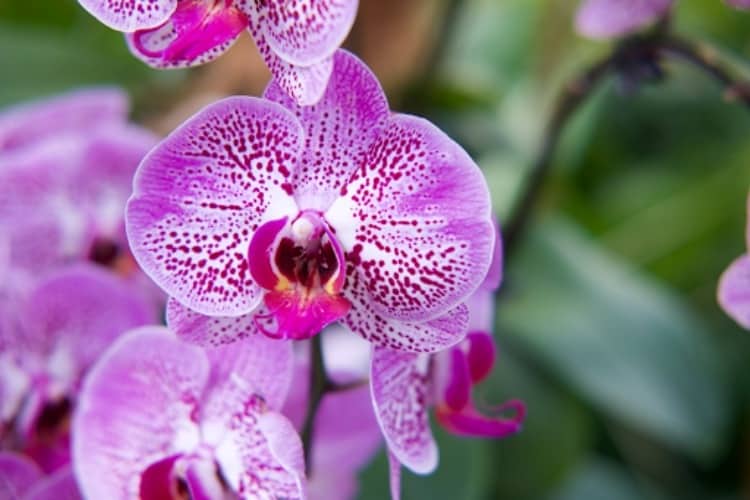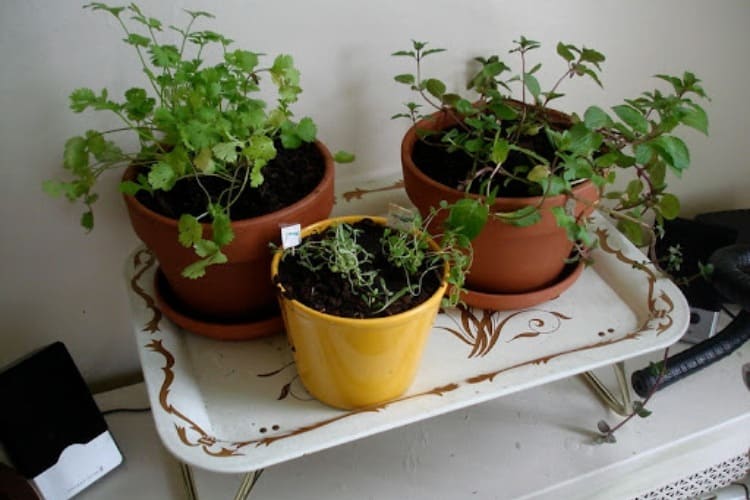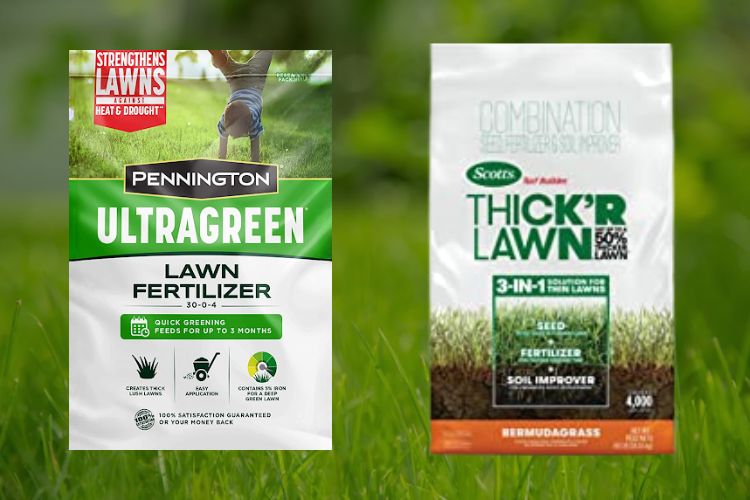The 5 Best Grow Lights For Tomatoes of 2023
We independently evaluate all recommended products. If you click on links we provide, we may receive a commission. Learn more
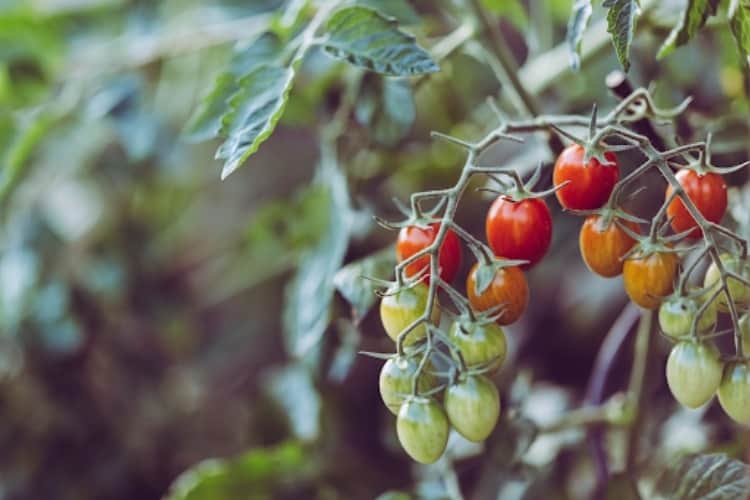
Are you looking for the best grow lights for tomatoes? As we know, tomatoes, being sun-loving plants, require a full spectrum of intensity to thrive in controlled environments.
This guide will explore and discuss the 5 best grow lights for your tomatoes. Dive into this in-depth review for more!
Our Top Picks
- Best Overall: Viparspectra XS1500 LED
- Best Performance: HYPHOTONFLUX HPF3000 LED
- Best Lighting Distribution: Medic Grow Full Cycle LED
- Best Small Grow Space: SANSI Dimmable LED
- Best Beginner: VIVOSUN VS2000 LED
Best Overall: Viparspectra XS1500 LED
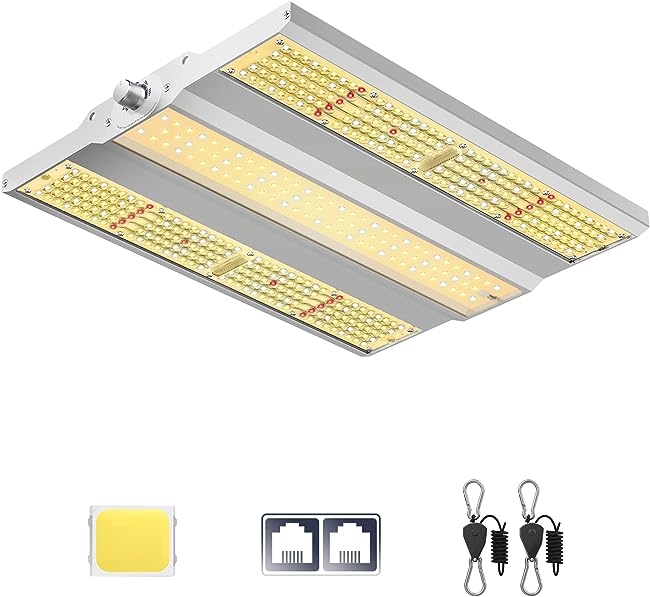
Specifications
| Wattage | 150 watts |
| Spectrum | Full |
| Dimmer Function | Yes |
Product highlights
The VIPARSPECTRA XS1500 LED is the best grow light for covering the flower area in my 3×3 tomato tent. It offers more performance than many other options in the same price segment.
Its build quality feels solid and durable, giving me confidence in this LED grow light’s long-term performance. The hardware for hanging the lights is excellent, especially the ratchet pulley. So adjusting the height and balancing it are easy with these pulleys.
Regarding lighting output, I did some testing using the PAR metre app. I noticed that when the device was closer to the plants with the dimmer set to 50% power, the intensity dropped significantly towards the edges of the footprint. However, the coverage and intensity improved when I placed it further away from the tomato plants at 100% power. Based on this result, I could optimise its placement among the tomato plants for the best lighting distribution.
Besides, the XS1500 offers an excellent dimmer function, with a power adjustment gain of 25% down to 0%. The grow light fits my tent perfectly, and the option to connect multiple lights will be helpful if I decide to increase the size of my tent in the future.
Also, I like the feature of connecting many lighting devices. This feature allows me to expand and customise as my space grows. Considering the excellent performance, build quality, and expandability convenience, I rate the VIPARSPECTRA XS1500 LED at 4.9 out of 5. But it’s the heat that worries me. Although there is a heat sink to reduce heat, it still generates considerable heat, so I bought an extra small fan to limit this problem.
Pros
- Excellent coverage
- Sturdy build quality
- Easy to hang and adjust
- Customizable and expandable
- Energy-efficient
Cons
- Require additional cooling
Best Performance: HYPHOTONFLUX HPF3000 LED
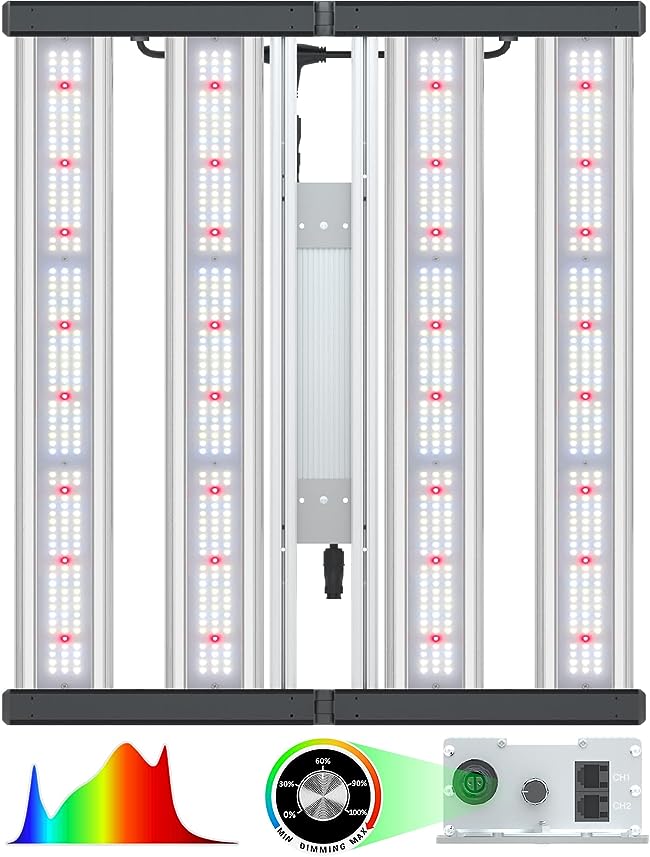
Specifications
| Wattage | 320 watts |
| Spectrum | Full |
| Dimmer Function | Yes |
Product highlights
I have been using the HYPHOTONFLUX HPF3000 LED grow light for my tomato plants, and it is worth the money.
It was ready to use right out of the box, which is convenient. As soon as I hung this light up, I noticed an immediate difference in the growth of the plants. Notably, this light folding bar design is the best available on the market and costs a fraction of the price of options with a similar feature.
But note that the controller is not in the package, so you must buy it separately. HPF3000 is compatible with most branded 0–10V controllers. So I could easily find the right one for this device.
I set it up in my 4×4 tent and tested its performance. Surprisingly, despite using 50% intensity, this HPF3000 LED light works quite well with uniform light distribution over the growing area. Moreover, at the maximum intensity, I didn’t notice the heat coming out of it like other high-wattage lights.
Besides, I can easily adjust the light level according to the specific requirements of the plants so that they receive the optimal intensity at each stage. Thanks to this easy dimmer design, my indoor tomatoes have produced large, healthy shoots. Also, I firmly believe that the far-red diodes have greatly helped improve my stem’s overall health and thickness
However, one major problem I had with this device was the smell coming from the driver when it was turned on for the first week. The smell was gone after that, and everything has been fine until now.
Right now, my tomato plants are thriving and loving the light they emit, and I’m happy with the results I’m seeing in my garden.
Pros
- Instant growth improvement
- Ready to use out of the box
- Have dimmable design
- Compatibility with controllers
- Do not generate heat
Cons
- The smell coming from the driver
Best Lighting Distribution: Medic Grow Full Cycle LED
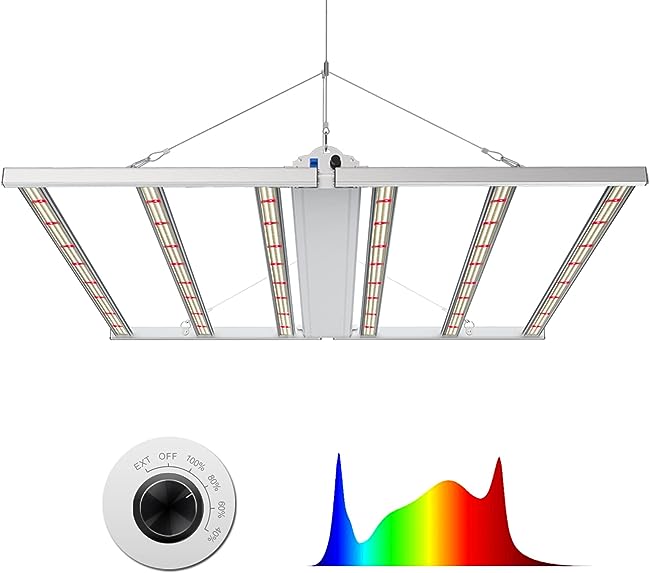
Specifications
| Wattage | 660 watts |
| Spectrum | Full |
| Dimmer Function | Yes |
Product highlights
The Medic Grow Fold-6 Full Cycle LED provides even lighting distribution for my entire 4 x 4 tent. Thus, I could maximise my growing space and remove any dark corners that hindered plant growth.
In terms of quality, the sturdy and flexible gooseneck arm allows me to position it exactly where my plants need it most. I’m reassured that the device will not break or fall, even with frequent adjustments.
But I have one complaint about the included hanging accessories. Unfortunately, these attachments don’t work well when setting up the tent. Thus, I had to buy the usual chain and ratchet to hang it closer to the top of the tent. It would be appreciated if the brand could provide a better suspension solution or incorporate a mechanism that locks the wings in place when folded out.
About performance, a full spectrum from six powerful LED bars caters to all stages of plant growth. From seedling to flowering, my tomato plants are thriving under Fold-6. The convenience of having a single lighting device that covers the entire growing cycle is a plus. Thus, I have no trouble switching lights or adjusting settings as my plants grow.
Besides, I am satisfied with its PPFD performance. I’m hanging it 12 inches from my tomato plants, and it has an impressive PPFD of 1,123 µmol/m2/s. This light intensity is more than enough to meet the daily light needs of my tomato plants and greatly enhance their yield potential. In addition, it allows me to adjust the intensity from 100% to 40% and has provided me with control over the lighting conditions for my plants.
While delivering such impressive PPFD levels, this lighting device generates minimal heat. This benefit not only keeps my plants comfortable and prevents heat stress but also contributes to energy efficiency and reduces the need for additional cooling equipment in my tent.
Thus, I can provide the ideal intensity for my plants without worrying about skyrocketing energy costs.
Pros
- Excellent lighting distribution and coverage
- Energy-efficient design
- Sturdy and flexible gooseneck arm
- Have dimmable features
- Low heat output
Cons
- Lack of locking mechanism for the expanded wings when folded out
Best Small Grow Space: SANSI Dimmable LED
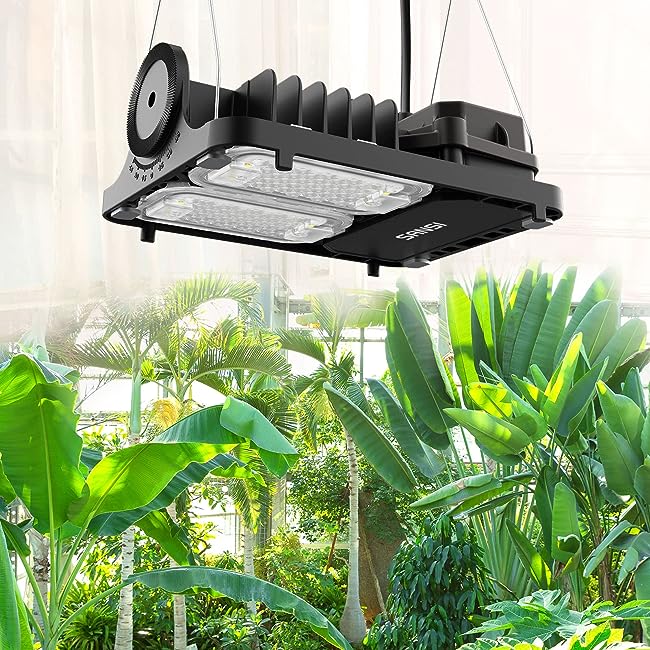
Specifications
| Wattage | 70 watts |
| Spectrum | Full |
| Dimmer Function | Yes |
Product highlights
SANSI Dimmable LED is a solution for my apartment with limited window space. When I start to set up this grow light, I find it a convenient process. I used small cargo slings instead of the included hardware to set the light higher while maintaining its height adjustment.
Also, its 90° beam angle provides a wide spread of light, ensuring better coverage and distribution across my plants. Compared to the previous model with a beam angle of 60°, this wider angle improved the overall efficiency of the light, reaching more plants in my garden.
When I turned it on, I was impressed by the brightness and quality of the daylight it gave off. At a distance of about 50 cm, the light intensity I measured was about 20,000 lux. This intensity is more than enough for my 2 x 1 tent tomato growing plan.
Besides, its dimmer function benefits my tomato plants. I can adjust brightness levels to meet their specific needs during different growth stages. It is now about 14 inches from the top of my tomato plants, and my lovely tomatoes thrive in this light. I’m growing tomatoes indoors so well that they will be ready to fruit almost a month earlier than in previous years.
Compared to other grow lights in the same price segment, the SANSI Dimmable LED has a faster heat dissipation feature. Thus, the working heat of the unit is efficiently transferred to the surrounding air through natural convection. This enhanced heat dissipation helps maintain optimal operating temperatures and prolongs light life, ensuring long-term performance and growing light reliability.
However, one complaint I noticed is that the canopy coverage provided by the light is quite narrow. It works well with my current setup, but you may need additional lights for larger growing spaces.
Pros
- Easy to hang and adjust
- Work well in limited space
- Offer a dimmable feature
- Fast heat dissipation
- Wide beam angle
Cons
- Limited coverage
Best Beginner: VIVOSUN VS2000 LED
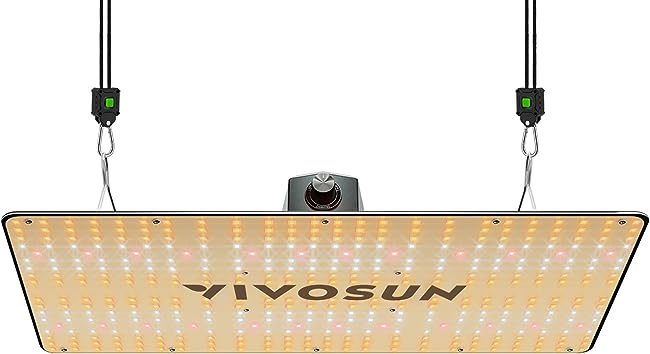
Specifications
| Wattage | 200 watts |
| Spectrum | Full |
| Dimmer Function | Yes |
Product highlights
I bought two of these VIVOSUN lights, and I find them great value. Comparing specs with other competitors, the VS2000 outperforms them while maintaining an affordable price tag.
I find it incredibly easy to use. Whether you’re a beginner or a professional grower, this light offers convenience and simplicity with a straightforward setup process and intuitive controls that make it accessible to anyone. So I appreciate how user-friendly it is, allowing me to focus on my tomatoes without any unnecessary complications.
The significant advantage of this light is its energy efficiency. It uses half the power of a 400-watt HID while producing the same results. This benefit saves energy costs and allows me to control the temperature in my 2 x 2 growing area.
Unlike other lights that require fans for cooling, this light operates without fans. So it generates minimal noise during operation. Hence, I can tend to my tomatoes without distracting or bothersome noise in the background.
Besides, like all the options above, it has a dimmable feature. So I have set the maximum light for the flowering period, and the tomato plants are growing well. Surprising! They flower faster than last year, when I hadn’t used this device.
However, I ran into a problem with the power connection to the driver. The connection feels flimsy, and any slight movement can cause the light to go off. Yet, I’ve found that keeping the lights fixed at maximum height solves this problem.
Pros
- Easy to use for beginners
- High brightness
- Energy-efficient
- Produces minimal heat
- Low-noise operation
Cons
- The power connection to the driver is flimsy
Conclusion
The 5 best grow lights for tomatoes above are ideal and efficient lights for nurturing healthy tomato plants from seedlings to fruition. Among them, do not miss the VIPARSPECTRA XS1500 LED grow light because it offers excellent coverage, sturdy build quality, and energy efficiency.
Then, you can create an ideal environment for your tomatoes, leading to vibrant foliage and juicy tomatoes throughout the year. Happy planting!
FAQs
Related posts:


